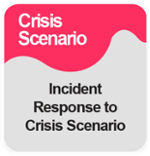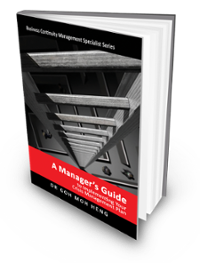 Action Steps for Managing a Protest Related to the Global Conflict at a University
Action Steps for Managing a Protest Related to the Global Conflict at a University
Description of Crisis
This section details specific actions to take before, during, and after a protest related to the global conflict at a university.
 This playbook is a training aid for Module 2 Session 2 of the CM-300/ 5000 Implementer/ Expert Implementer Course participants to attempt the CM plan development assignment. This playbook is a training aid for Module 2 Session 2 of the CM-300/ 5000 Implementer/ Expert Implementer Course participants to attempt the CM plan development assignment. |
 |
Action Steps for Pre-Crisis
Proactive Planning and Risk Assessment
- Identify Potential Triggers: Monitor global events and assess the likelihood of campus protests related to the conflict.
- Develop Contingency Plans: Create detailed plans for various protest scenarios, including peaceful demonstrations, civil disobedience, and potential violence.
- Establish Communication Channels: Ensure clear lines of communication between campus leadership, law enforcement, and student organizations.
- Train Staff: Train relevant staff members (e.g., security and administrators) on protest management techniques, de-escalation strategies, and crisis communication protocols.
Campus Security and Emergency Preparedness
- Enhance Security Measures: Increase security presence, review surveillance systems, and implement additional safety measures.
- Develop Emergency Response Plans: Create detailed emergency response plans for various scenarios, such as medical emergencies, evacuations, and disturbances.
- Conduct Drills and Simulations: Conduct drills and simulations regularly to test emergency response procedures and identify areas for improvement.
Community Engagement and Dialogue
- Foster Open Communication: Encourage open dialogue and understanding between students, faculty, staff, and the wider community.
- Establish Listening Posts: Create opportunities for students to express their concerns and ideas about global conflict.
- Facilitate Dialogue: Organize forums and discussions to promote respectful exchange of viewpoints and address potential misunderstandings.
Crisis Communication Plan
- Develop Key Messages: Prepare clear and concise messages to be disseminated during a crisis, addressing the university's stance, safety measures, and support services.
- Identify Communication Channels: Determine the most effective communication channels with students, faculty, staff, and the broader community (e.g., website, social media, email, text alerts).
- Designate Spokespersons: Assign individuals responsible for communicating with the media and public during a crisis.
Support Services and Resources
- Identify Available Resources: Assess the availability of mental health counselling, legal aid, and other student support services.
- Create a Support Network: Establish a network of faculty, staff, and students who can provide emotional support and guidance to those affected by the conflict.
- Promote Self-Care: Encourage students to care for their physical and mental well-being through stress management techniques and healthy coping mechanisms.
Action Steps for During-Crisis
Activate Emergency Response Plan
- Implement Contingency Plans: Immediately activate the pre-developed contingency plans tailored to the specific protest scenario.
- Coordinate with Law Enforcement: Maintain close communication with local agencies and coordinate response efforts.
- Monitor the Situation: Monitor the protest's progress, identifying potential escalation points or safety concerns.
Ensure Safety and Security
- Prioritize Safety: Protect the safety of students, faculty, staff, and visitors, both within and outside the protest area.
- Manage Crowds: Implement crowd control measures, including barricades, security personnel, and clear communication channels.
- Address Medical Emergencies: Have medical personnel readily available to respond to any injuries or health concerns.
Facilitate Peaceful Dialogue
- Encourage Peaceful Expression: Promote peaceful and respectful expression of views, avoiding confrontations or provocations.
- Mediate if Necessary: If necessary, deploy trained mediators to facilitate dialogue between protesters and university representatives.
- Address Concerns: Actively listen to protesters' concerns and work towards finding mutually agreeable solutions.
Effective Crisis Communication
- Disseminate Information: Provide timely and accurate information to the campus community through all available communication channels.
- Address Rumors and Misinformation: Counteract false or misleading information to prevent panic or confusion.
- Maintain Transparency: Be open and transparent about the university's actions and the situation.
Provide Support and Resources
- Offer Counseling and Support: Make mental health counselling and support services available to those affected by the protest.
- Facilitate Access to Resources: Connect students with relevant resources, such as legal aid or community organizations.
- Promote Self-Care: Encourage students to practice self-care and stress management techniques.
De-Escalation Strategies
- Avoid Provocations: Refrain from actions that could escalate tensions or incite violence.
- Use De-Escalation Techniques: Employ de-escalation tactics, such as calm language, body language, and active listening.
- Maintain Professionalism: Ensure that all university personnel involved in the response act professionally and rationally.
Post-Crisis Evaluation
- Conduct Debriefing: After the protest, conduct a debriefing to assess the effectiveness of the response and identify areas for improvement.
- Learn from Experiences: Analyze the incident to gain insights into future protest management strategies.
- Implement Changes: Based on the lessons learned, adjust the university's emergency response plans and protocols as necessary.
Action Steps for Post-Crisis
Post-Crisis Evaluation and Debriefing
- Conduct a Thorough Review: Conduct a comprehensive evaluation of the crisis response, including the effectiveness of the plans, the performance of staff, and the overall outcome.
- Identify Lessons Learned: Analyze the incident to identify areas for improvement and gain valuable insights for future crisis management.
- Debrief with Relevant Personnel: Conduct debriefings with key personnel involved in the response to gather feedback and address any concerns.
Crisis Communication Follow-Up
- Continue to Provide Updates: If necessary, update the campus community regarding the aftermath of the protest and any ongoing developments.
- Address Misinformation: Address any lingering misinformation or rumours that may be circulating.
- Maintain Open Communication: Encourage ongoing dialogue and transparency with students, faculty, and staff.
Support and Resources
- Offer Ongoing Support: Ensure that mental health counselling and other support services remain available to those affected by the protest.
- Facilitate Access to Resources: Connect students with relevant resources, such as legal aid or community organizations.
- Promote Self-Care: Encourage students to prioritize self-care and well-being after the crisis.
Review and Update Emergency Response Plans
- Incorporate Lessons Learned: Incorporate the lessons learned from the crisis into the university's emergency response plans.
- Update Contingency Plans: Update contingency plans for future protests or similar events.
- Conduct Drills and Simulations: Conduct regular drills and simulations to test updated emergency response procedures.
Address Underlying Issues
- Engage in Dialogue: Engage in open dialogue with students, faculty, and staff to address the underlying issues contributing to the protest.
- Implement Reforms: Consider implementing reforms or policy changes to address the root causes of the conflict and prevent similar incidents in the future.
- Foster a Culture of Understanding: Promote a culture of understanding, respect, and inclusivity on campus.
Community Building and Healing
- Organize Healing Activities: Organize events or activities to promote healing and community building among students, faculty, and staff.
- Foster Unity: Encourage unity and solidarity among the campus community.
- Celebrate Diversity: Celebrate the diversity of perspectives and experiences on campus.
Summing Up ...
 This playbook provides a comprehensive framework for managing protests related to the global conflict at a university. It outlines detailed steps to be taken before, during, and after a crisis to ensure the safety and well-being of the campus community.
This playbook provides a comprehensive framework for managing protests related to the global conflict at a university. It outlines detailed steps to be taken before, during, and after a crisis to ensure the safety and well-being of the campus community.
Before the crisis, universities should prepare by identifying potential triggers, developing contingency plans, and training staff.
During the crisis, universities should prioritize safety, facilitate peaceful dialogue, and support those affected. After the crisis, universities should evaluate the response, address underlying issues, and promote healing and community building.
By following the guidelines outlined in this playbook, universities can effectively manage protests, minimize disruptions, and maintain a safe and inclusive campus environment.
Click the right icon to view more "Playbook"s.
Do You Want to Continue Your CM Professional Training with Certification Remotely?
Reference Guide
 Goh, M. H. (2016). A Manager’s Guide to Implement Your Crisis Management Plan. Business Continuity Management Specialist Series (1st ed., p. 192). Singapore: GMH Pte Ltd.
Goh, M. H. (2016). A Manager’s Guide to Implement Your Crisis Management Plan. Business Continuity Management Specialist Series (1st ed., p. 192). Singapore: GMH Pte Ltd.
More Information About Crisis Management Blended/ Hybrid Learning Courses
To learn more about the course and schedule, click the buttons below for the CM-300 Crisis Management Implementer [CM-3] and the CM-5000 Crisis Management Expert Implementer [CM-5].





![[BL-3-Catalog] What Specialist Level Blended Learning Courses that are Available?](https://no-cache.hubspot.com/cta/default/3893111/4b22a53c-6e3e-4b9e-8c2a-888423f1d26c.png)
![[BL-5-Catalog] What Expert Level Blended Learning Courses that are Available?](https://no-cache.hubspot.com/cta/default/3893111/fe175db3-7f57-4636-bf09-e9a836aa5478.png)





![[BL-CM] [5] Register](https://no-cache.hubspot.com/cta/default/3893111/82024308-16f4-4491-98be-818a882c6286.png)

![Email to Sales Team [BCM Institute]](https://no-cache.hubspot.com/cta/default/3893111/3c53daeb-2836-4843-b0e0-645baee2ab9e.png)





